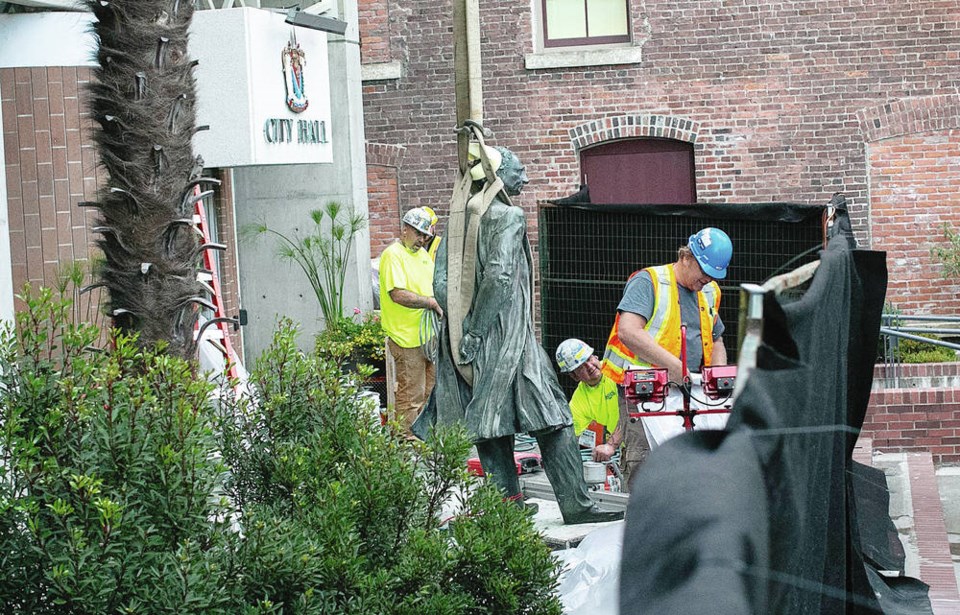In his bestseller The Da Vinci Code, writer Dan Brown has his character Robert Langdon suggest that “history is always written by the winners,” an opinion that has been attributed to many well-known figures, from Churchill to Hermann Goering.
Brown has his character expand upon the thought, saying: “When two cultures clash, the loser is obliterated, and the winner writes the history books — books which glorify their own cause and disparage the conquered foe. As Napoleon once said, ‘what is history, but a fable agreed upon?’”
That’s not too reassuring about the objectivity of history, but it does lead us to a political kerfuffle in the U.S., where some states are seeking to ban the teaching of the latest academic/political football, “critical race theory.”
Let’s back up for a moment.
Critical race theory, abbreviated as CRT, is a theoretical framework (emphasis on “theoretical”) or set of perspectives, a politically infused lens if you like, through which structural and institutionalized racism can be examined in a kind of “what was OK then is not now” context.
CRT examines social, cultural and legal issues as they relate to race in the U.S., here in Canada and elsewhere in the world, and it doesn’t make thinking about — much less teaching — history any easier.
It examines links between political power, social organization and language, and its ideas have informed other fields, such as the humanities, the social sciences and teacher education.
There are plenty of perilous holes in the road to current affairs lessons for well-intentioned teachers to trip over.
Put simply, according to Kimberlé Crenshaw, a founding critical race theorist and law professor who teaches at UCLA and Columbia University: “Critical race theory is an approach to grappling with and challenging a history of White Supremacy that rejects the belief that what’s in the past is in the past, and that the laws and systems that grow from that past are detached from it.”
But history is a cruel and relentless master, which, despite the best efforts of anti-CRT politicians both here and elsewhere, cannot be denied.
As York University researchers Dua, Razak and Warner wrote in an article on social justice: “Canada provides an interesting site for investigations into a long history of Indigenous colonization, white-settlement policies and racialized immigration policies of the past.”
CRT scholars view race and colonial white supremacy as a kind of crossroads in the evolution of a society that serves to uphold the interests of white people against those of marginalized communities.
In the field of legal studies, CRT emphasizes that merely making laws colour-blind on paper may not be enough to make the real-world application of the laws colour-blind.
And that’s where teaching the truths of history can get tricky, especially since the B.C. School Act requires that “all schools and Provincial schools must be conducted on strictly secular and non-sectarian principles.”
Some educators believe that historically relevant aspects of our history are best left alone.
Former prime minister John A. Macdonald vigorously advocated residential schools for Indigenous children, saying in 1879: “It has been strongly impressed upon myself, as head of the Department, that Indian children should be withdrawn as much as possible from the parental influence, and the only way to do that would be to put them in central training industrial schools where they will acquire the habits and modes of thought of white men.”
And Macdonald, for all his contributions to the emergence of Canada as a nation, said far worse than that about Indigenous people.
Teaching rather than ignoring or even denying that kind of thing may be a complicated, even professionally perilous path for Canadian public school history teachers. But, as an aspect of Canada’s past, such revelations and truths may be an important step toward reconciliation for the next generation of both Indigenous and non-Indigenous kids.
So perhaps, with fresh revelations about the unspeakable horrors of Canada’s 130 or so residential “schools” right in our faces, the previously accepted teaching of a somewhat whitewashed and revisionist Canadian history in public schools has received an unavoidable and timely “smack upside the head.”
Pulling down statues of Macdonald actually changes nothing. It might feel good. It might feel like a demonstration of 2021 moral sensibility, but in terms of existing racism, systemic and otherwise, it’s a gesture without real substance.
What might bring about change is for whitewashed history courses to come clean in the way that Daisaku Ikeda, a Buddhist philosopher, educator, author and poet, explains — “to communicate the truths of History is an act of hope for the future.”
Geoff Johnson is a former superintendent of schools and former teacher of history.



